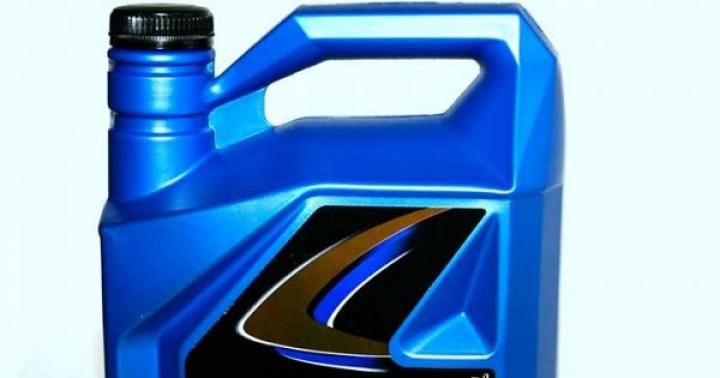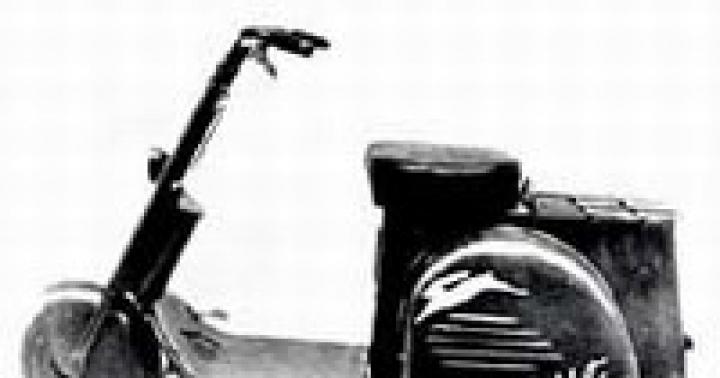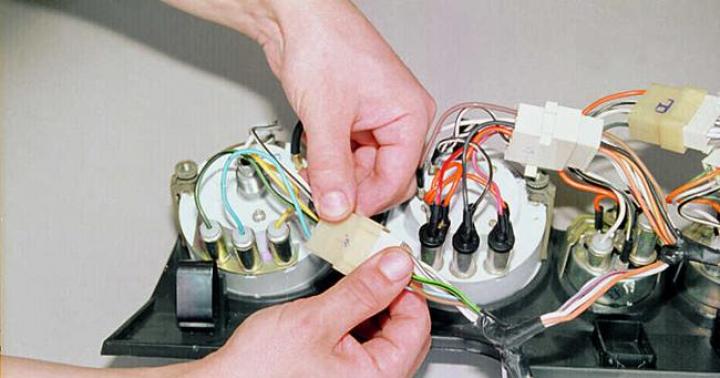Now, for sure, there are very few opponents of the assertion that automatic gearboxes are being forced out of the market at a fairly rapid pace. mechanical gearboxes... But, despite the fact that the overwhelming majority of drivers with an automatic transmission, only a small part of them use the automatic transmission correctly, which can lead to a significant decrease in efficiency or, much worse, to a breakdown of the unit.
It is very simple and convenient to use the automatic transmission
And, in addition to the basic knowledge that the automatic transmission automatically selects the gear ratio that is most suitable for the driving conditions, and thereby endows the ride with convenience, each driver must know the basic principles of the correct use of such a unit, so as not to shorten its service life.
First of all, you need to figure out how the modes switch in an automatic transmission.

Modes of switching and control of automatic transmission
Control automatic transmission gear is as follows.
• Parking (letter P on the selector) - designed to start the engine. Switching to the P position is made after a complete stop and setting the car on the "handbrake";
• Moving forward (D) - standard automatic transmission operating mode, used more often than others;
• Reverse ( reverse, position R) - the car can only move backward. Shifting during a stop with the brake pedal depressed;
• "Neutralka" (N) - the mode when the engine and automatic transmission are completely open. Most often used to warm up the engine at idle in cold weather;
• D3 (S) - Downshift Modes: Shifts downhill or uphill. brakes more by the engine;
• D2 - designed for difficult conditions (slippery surfaces, mountain roads, etc.). Driving is possible in first and second gear. Driving in third and fourth gear is prohibited.
• D1 on Japanese cars designated as L - movement is possible only in first gear. It is mainly used when braking the engine on steep slopes, driving on a muddy, swampy or icy road, where you need to move "vnatyag", without overgasm.
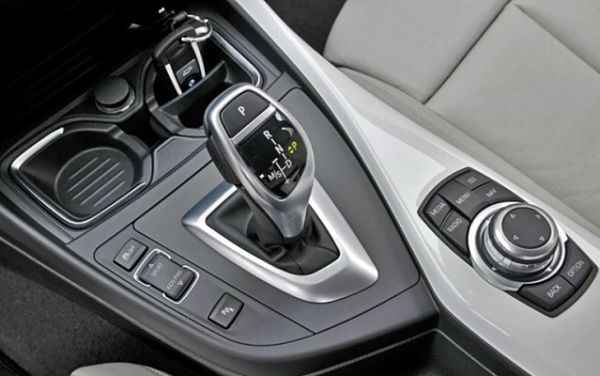
In addition, more modern automatic boxes are equipped with an increasing number of additional operating algorithms: normal or normal (N), economical (E), sport mode (S) and others. There is an overdrive mode, this mode is discussed in a separate article.
Basic rules for using the machine box
First of all, it should be remembered that automatic transmissions do not like sharp accelerations and prolonged wheel slip - this leads to their overheating of the "automatic machines". If it is impossible to move in any direction, do not feverishly move the wings in the selector groove, but it is better to seek outside help and push or tow the car. The general process of driving a car and using the automatic transmission is as follows. To start using the automatic box you need:
- drown the brake pedal, the selector from position P, N or R switches to position D;
- the car is removed from the hand brake;
- after smoothly releasing the brake pedal, the car will gradually and smoothly begin to move forward;
- to increase speed, you should use the accelerator more, which will be accompanied by an increase in gears; - to reduce the speed, it is enough to release the pressure or completely release the gas pedal. The gears will be replaced already in the downward direction;
- if you want a more significant deceleration or stop, you must apply the brake, and during the resumption of movement, it is enough to again resort to the gas pedal;
- it is important to remember that with such a driving rhythm, the gearbox must constantly be in "drive" (position D), which is advisable to change only during a long stay.
Additional algorithms for the automatic box
Winter mode "machine" Depending on the manufacturer, it can have different markings: Winter, icon * , Snow, W etc. The main purpose of the winter mode is to minimize slipping, for which activation of the first gear is excluded. For the start, the second stage is used, which allows for a more smooth transmission of torque to the wheels, which is very important on slippery surfaces. Any gear change takes place at a reduced engine speed, thereby ensuring smooth operation of the gearbox and almost completely eliminating the possibility of a skid. When the ambient temperature is warm, it is strictly forbidden to activate this algorithm.
It is strictly forbidden to move the gearshift lever to the "P" and "R" positions in motion. To move the lever to this position, you need to stop. Otherwise, the automatic transmission can be damaged. It is also not recommended to move the lever to the "N" position while driving, this can cause a skid, especially on an icy road. You can move the gearshift lever to all other positions while driving. It is also recommended to move the lever to the "N" position during long stops with the engine running, for example, in traffic jams or traffic lights. This is especially true in summer, at high temperatures, as it will help to avoid overheating of the "machine".
Video: How to use an automatic transmission
Features when driving with automatic transmission
At first, it should be clearly remembered that no automatic transmission "likes" to work cold, especially with increased load. For this reason, even at a warm ambient temperature, the first few kilometers after a long parking should be driven at a low speed and without vigorous acceleration in order to get into the transmission. It is also important that the gearbox takes a little longer to reach operating temperature than the engine. For the fastest warming up of the automatic transmission in cold weather, you can stand still several times to change the operating modes, stand with activated mode D (while holding the brake) or activate winter mode for a short time at the start of the movement.
The second point stick to roads with good coverage. Since modern gearboxes, even mechanical ones, do not differ in their love of off-road. Exception - special cars adapted to similar conditions. Also, automatic transmissions do not respond well to towing heavy trailers or other vehicles. In such situations, they are susceptible to rapid overheating, which greatly accelerates wear. In addition, avoid towing the "automatic" car itself. Some exceptions may be reflected in the instructions for the car, but they are few when they go beyond the limits of a distance of 50 km and a travel speed of more than 50 km / h.
Does a car with an automatic transmission need a handbrake?
All cars are equipped with a parking brake. Only the mechanisms of its implementation differ: mechanical, electromechanical or completely electronic. However, despite this, the overwhelming majority of car owners with automatic transmission neglect its use, citing the fact that it is enough to put the car in the “parking lot”, and with a short stop, a working brake is sufficient. But, unfortunately, this approach is not correct. Since even the manufacturer's instructions prescribe the constant use of the handbrake during long-term parking. Most likely, such a precaution is caused by a banal reinsurance car companies, which, frankly speaking, can hardly be called superfluous. Moreover, there are many situations in which it is impossible to do without a "handbrake":
- it must be activated when stopping or leaving the machine with the engine running;
- hand brake will be indispensable as insurance when replacing a wheel or carrying out similar manipulations;
- in the event of an unplanned stop on a descent or ascent, the automatic transmission selector will require unnecessary effort when shifting to P, if the parking brake is not applied. In such a situation, at the start of the movement, the “handbrake” should be loosened only after the selector is transferred from the “parking” to “drive”. problems in her work and to maximize the pleasure of a comfortable ride. Well, the main argument will be the guaranteed achievement of the specified service life of the machine box.
On the world automotive market Equally widely represented are vehicles equipped with both manual (manual transmission) and automatic (automatic transmission) transmissions. And it cannot be said that one of these transmission options has any special advantages over the other. It's just that each of them has its own specific advantages and disadvantages. Therefore, the final choice of the option to drive a car, undoubtedly, belongs to you, as the future or actual owner. vehicle... After all, despite any recommendations and advice, it is you who determine the amount that you are ready to part with for the sake of purchasing a car, you know your driving style, and you also have an excellent idea of the conditions in which the car will have to drive.
If we summarize the opinions of experts and experienced drivers, then the automatic transmission is more suitable for beginners who have just got to get a license, and for people who prefer a calm driving style in a modern metropolis. But lovers of thrills and drive with a long experience of driving a car, it is better to opt for a car with mechanical box gear.
We can unequivocally say that the advantages of an automatic transmission include:
- ease of driving;
- quick teaching beginners the basics of driving;
- the ability to pay maximum attention to the road;
- no overloads of the vehicle engine.
And the main disadvantages should be attributed to the greater, in comparison with a manual transmission, the cost of the car, the complexity of maintenance and rather expensive repairs. And also, according to the drivers themselves, cars with an automatic transmission do not recognize extreme driving conditions.
Therefore, if you have not yet decided on the choice of a car, think about exactly how you will operate it and how much money you expect to spend on its maintenance. But about how to properly drive a car that has an automatic transmission (transmission) in order to repair it less often, we will tell you further.

Appearance and operating modes of automatic transmission
Where in a car with a manual transmission you are used to seeing a lever with which the driver switches gears, in a car with an automatic transmission there is a small lever with a button - the so-called mode selector. This does not mean that the concept of gear shifting is absent here at all - no, it's just that this function belongs entirely to electronic system management, that is, a computer.
On the visible part of the automatic box unit, the modes of its operation are indicated in Latin letters, for example:
- "P" stands for parking mode, it can be compared to a handbrake tightened in mechanics. It locks the wheels of the car and turns on when the engine starts and stops. Under no circumstances should the "P" mode be switched on while the car is moving - this will damage the box.
- "R" stands for reverse, so-called reverse. It should also be turned on only when the car is completely stopped.
- "N" denotes the same mode, which in the auto mechanics corresponds to the neutral gear. In the case of towing your vehicle, the automatic transmission lever should be in this position, when the free rotation of the wheels, independent of the engine, allows you to move the car itself.
- "D" stands for driving mode (from english word"drive"). Needless to say, this lever position will allow the car to move forward and the gear shifting itself will be automatic, depending on driving conditions. If the car is going downhill, then this mode will not allow it to roll back (of course, if the hill is not steep).
In addition to the main positions of the automatic transmission lever, there are also additional ones. In particular, we will talk about the winter regime. Depending on the car brand, it can be designated in several variants, for example: "*", "HOLD", "W", "SNOW". Such a special program for driving in winter conditions, when the road surface is often slippery, is designed to prevent slipping at the moment when the car starts to move and when changing gears. In winter mode, your vehicle starts its movement immediately from second gear, and their further switching is carried out at lower revs, which helps to reduce the likelihood of both light and uncontrollable drifts. The use of the winter mode in the summer is not allowed, since this places a heavy load on the automatic transmission, it overheats and its wear increases.
When and how to turn on the automatic transmission operating modes
Before moving the gear lever to one position or another, start the car engine, depress the brake and press the button located on the lever itself (from the side, front or top). The gear you need engages one to two seconds after the mode has been selected. At the same time, if you noticed, the motor sounds more dull.
Remember that only the right foot is responsible for both pedals, the left does not participate in the process. Of course, in some cases, the modes are switched without the need to squeeze the brake or press a button. This happens when the car is already moving.
Release the brake pedal to set the vehicle in motion. If the gearbox lever is set to the "D" position, the machine will go forward, if the "R" mode was selected - back. "Neutral" allows the car to simply stand still or roll downhill - do not forget about this and do not release the brake unnecessarily. It turns out that regardless of whether you press the gas pedal or not, in the drive and reverse modes, the engine still pushes the car, as it were.
The characteristics and quality of driving a car with an automatic transmission depends on how you press the gas pedal. Smooth clicks ensure jerk-free acceleration and unhurried gear changes. If there is a need to accelerate, do not be afraid to add gas, pushing the pedal all the way. Thus, you kind of give commands to an automatic box - more intense, faster, more powerful. Be aware that in this case, the engine will first enter kick-down mode, in other words, the automatic transmission will switch to more low gear, and only after that the car will accelerate. Such a second delay between pressing the gas and the real set of revolutions during leisurely driving is insignificant, but when overtaking, when fractions of a second are counted, it can lead to disastrous results. That is why fans of extreme driving most often choose a vehicle with a manual transmission.
Learning to Stop Correctly
There is nothing easier than stopping a car with an automatic transmission. To do this, you just need to apply the brake. But here the question arises as to whether it is necessary to transfer the gear lever from the "D" mode to another position. And here's how to proceed:
- switch if the stop is long (more than half a minute);
- do not switch if it is short-lived, for example, in front of a traffic light.
What does it do? In the first case, fuel is saved, because the engine does not have to push the car on the brake. The lever can be moved to the "N" position, while still holding the brake pedal, or you can turn on the "P" mode, resting your foot. The second option will extend the service life of expensive box mechanisms.
If you are moving slowly in a traffic jam, constantly moving from a place, then stopping, put the gear lever in the “N” position, because it is from it and back, to the “D” mode, that the car will automatically switch, without additional presses.
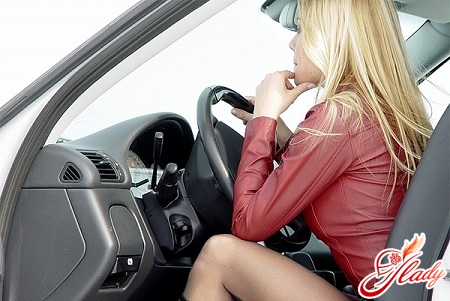
Hand brake and its functions in vehicles with automatic transmission
According to the owners of a car with an automatic transmission, they practically do not use a manual (parking) brake. Although there is a clause in the operating rules that urges drivers to still not completely trust the parking mode and use the handbrake. Whether there is a rational grain in this and whether it is really necessary to use the parking brake frequently is difficult to answer, since the owners of cars with automatic transmission do not have the habit of checking its position before starting to move. And if the handbrake was nevertheless involved and forgotten, then the driver often finds himself at a loss, not paying attention to the signal of the instrument panel in time.
But it is still worth mentioning separately the cases when the hand brake is simply necessary, for example:
- stopping a car with a running engine, especially when the driver needs to leave the salon;
- reliable fixation of the position of the car (when replacing wheels, and so on.);
- stopping on a steep slope, before switching to parking mode (otherwise the lever from position "P" will have to be moved with great effort).
In any case, try not to forget to check the position of the handbrake - this will save you from additional hassle with the car.
What the automatic transmission does not like
Load and serious speed are the enemies of a cold automatic transmission. In winter, by pre-warming the engine, you simultaneously prepare the gearbox for driving. This does not happen in summer, so do not rush to accelerate in the first few kilometers - allow time for the oil to reach the required temperature. In winter, you can, so to speak, disperse the oil in the box by moving the lever to different positions and lingering a little in each of them.
For owners of vehicles equipped with an automatic transmission, it is important to avoid off-road driving, as this type of transmission does not tolerate wheel slip. If, nevertheless, the car gets stuck, try to go back on your own track. The main thing is not to try to leave in "D" mode: for this there are low speed modes, which are marked with "L" or "1" symbols and are analogous to the first gear in a car with manual transmission.
It is also better not to experiment with towing heavy trailers or another car with your help, since the automatic transmission tends to overheat under heavy loads, and this, in turn, leads to premature wear of its mechanisms.
A certain difficulty for a vehicle with an automatic transmission is its own towing. This is allowed only in case of extreme necessity and in strict accordance with the rules of operation of the very automatic box with which your car is equipped. It is important to avoid overheating, therefore the towing distance should not exceed 50 km. Remember that some vehicles have an automatic transmission that generally prohibits their movement using a tow rope.
Here, it turns out, how many nuances the automatic transmission conceals in itself. However, the fact is that in a megalopolis with its constant traffic jams and traffic lights, of course, it will be easier for a young driver to learn how to drive a car with an automatic transmission. Yes, and many experienced car enthusiasts have recently been happy to transfer to vehicles with just this type of gearbox, since this allows them to make driving in urban conditions the most comfortable.
In general, in order to become a client of various kinds of service workshops as rarely as possible and to look there only for the purpose of routine diagnostics or maintenance, it is worth paying special attention to the style of driving a car equipped with an automatic transmission. Smooth acceleration and deceleration are much preferable to harsh acceleration and deceleration. This makes it possible to make fuel consumption more economical not only in the driving mode outside the city, but also within its boundaries. In order to preserve the life and health of yourself and those around you, do not forget about those notorious two or three seconds delay between pressing the gas and shifting the gear into the automatic transmission, so overtaking maneuvers should be performed thoughtfully, without recklessness.
The issue of operation should also be approached reasonably, because the cost of a new automatic transmission or repairing a broken one is very high. However, the correct riding style under acceptable conditions will ensure the serviceability of this important comfortable riding equipment.
send
Class
Automatic transmissions have made life much easier for motorists. They especially liked the fair sex. Indeed, when driving a car with automatic transmission, you do not need to think about when to switch gears and carry out this operation. Automation does everything on its own. The driver essentially uses one right foot to drive the car. But still, many are thinking about the question of how to operate an automatic transmission in various conditions and situations on the road? And in this case, there really are some nuances.
Main operating modes of the unit
In place of the gearshift lever familiar to drivers with "mechanics", in cars with "automatic" there is a selector in the form of a small lever. Most often, classic automatic transmissions have 4 steps.
Usually there are such modes of operation of the automatic box:
It should be noted that many automatic transmissions, especially modern models, have additional modes designed for movement in certain conditions. These include:

Driving a car with an automatic transmission
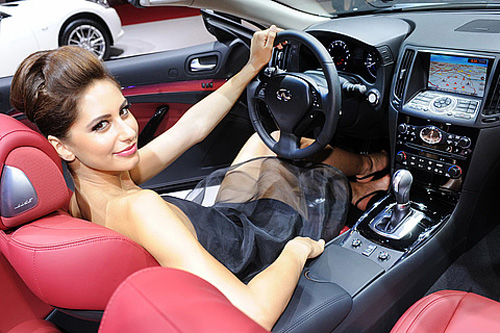
It is possible to move the gearshift handle to a certain mode if three conditions are met:
- Launched power unit;
- Brake pedal depressed;
- A recessed button on the selector itself.
The required mode is activated in a second or two after moving the lever. During this time, the engine speed will drop slightly.
Immediately after turning on, release the brake pedal and the machine will start moving. It is worth remembering that in D and R modes, the power unit constantly pushes the car, even when the accelerator pedal is fully released. It is the work with the gas pedal that is the key signal for the automatic transmission. If you press smoothly, then the switching will be slow and not high revs... If you need intensive acceleration, you should sharply press the pedal, the "box" will go to a step or two lower and intensive acceleration will begin.
The classic automatic transmission has one drawback. After pressing the pedal, it takes about a second before the start of a sharp acceleration. Of course, this is not much, but in some cases (with risky overtaking, etc.) a second decides a lot. Therefore, this nuance should be taken into account.
If you need to stop, simply press the brake pedal. You don't need to move the selector. For short stops in front of a traffic light, the lever is not retracted from position D, but the pedal is held in the depressed position. If there is a traffic jam or a stop ahead for a longer period (more than half a minute), it is better to move the lever to the N or P position, this will save fuel, which is spent on pushing the braked car. It must be remembered that from position D to N and in the opposite direction, the selector is transferred without pressing a button on it. This is handy when driving in trials for frequent movement in both directions.
If the car is rolling down a hill, it is not recommended to switch the selector to N mode. After all, when driving on a regular "Drive", the unit independently activates engine braking. This does not overheat the brake pads. If you still want to slide on a neutral stage, then you should move the selector without pressing a button. Returning the automatic transmission to D mode should also be done without pressing the button. Thus, it is possible to exclude the erroneous inclusion of reverse modes or P. Yes, and the machine will stop faster.
How to drive with a trailer in a car with automatic transmission?

It should be noted that towing by a car with an automatic gearbox is an undesirable phenomenon. This is especially true when towing another vehicle. In this situation, overheating occurs. transmission oil as a result of increased stress on the gearbox components.
As for trailers, non-heavy ones should be towed in normal D mode. speed mode is not limited. If the trailer is heavy, then the machine must have an additional gearbox oil cooler. It is quite difficult to install one even on authorized services. Therefore, with the constant need to tow a heavy trailer, it is better to buy a car with an "automatic" with already installed radiator... It is usually found on large pickup trucks and SUVs capable of towing heavy trailers.
Also, for moving with a trailer, a mode that blocks automatic transmission switching above the second stage is suitable. In this case, the described mode should not be activated when driving at a speed of more than 80 km / h.
Towing a car with an automatic transmission
 Perhaps this question is one of the most common among the owners of cars with "automatic". Such cars are allowed to be towed, however, only when the power unit is running and in the neutral position of the automatic transmission selector. In this case, the speed limit is limited to 50 km / h, and the maximum towing range should not exceed 50 km. If the power unit of the car does not start, then it is better to call a tow truck than to subsequently carry out expensive transmission repairs. In any case, it is best to read the operating instructions for the model of the machine before towing. After all, some manufacturers generally prohibit towing cars with "automatic machines". Others limit the speed to 30 km / h and the distance to 30 km.
Perhaps this question is one of the most common among the owners of cars with "automatic". Such cars are allowed to be towed, however, only when the power unit is running and in the neutral position of the automatic transmission selector. In this case, the speed limit is limited to 50 km / h, and the maximum towing range should not exceed 50 km. If the power unit of the car does not start, then it is better to call a tow truck than to subsequently carry out expensive transmission repairs. In any case, it is best to read the operating instructions for the model of the machine before towing. After all, some manufacturers generally prohibit towing cars with "automatic machines". Others limit the speed to 30 km / h and the distance to 30 km.
As for towing by a car with automatic transmission, it is generally undesirable. If there is no other way out of this situation, then you should check how much weight the towed vehicle is. It must be less than or equal to the weight of the tractor. Towing is possible only in selector position L or 2. This mode limits shifting to 2 steps. In this case, the towing speed should not exceed 40 km / h.
Some recommendations for car owners with automatic transmission
As mentioned above, motor braking is possible on cars equipped with classic automatic transmissions. To drive on long slopes, release the O / D button (if available), which will force the unit to go to the third stage and brake gently with the engine. In this case, the car will not accelerate more than 80 km / h. This feature cannot be used at speeds above 120 km / h.
To drive on steep slopes, move the selector to position 2. This will limit the driving speed at around 40-60 km / h. To travel off asphalt roads with very steep slopes and inclines, the selector should be set to L position. As a result, the car will not be able to accelerate more than 10-20 km / h. On uphills, in this case, you can use the maximum torque of the unit.
In general, cars with automatic transmission "do not like" off-road. Indeed, in this case, wheel slip is possible, as well as when driving on winter roads. And this is fraught with excessive wear of the automatic transmission parts. If the car is stuck in a puddle or mud, you should not accelerate with might and main. To overcome an obstacle, mode L or 1 is suitable. It is better to try to drive back along your own track.
It must be remembered that an unheated unit does not like loads and high speed. Even in the summer months, it is necessary to move smoothly for the first couple of kilometers of the path without sudden jerks and accelerations. You need to wait for the oil in the power unit and automatic transmission to warm up to operating temperature. But in the transmission it warms up several times slower.
In winter cold, while warming up the engine, you can alternately move the gearbox selector to different positions, lingering on each one. This will allow the oil in the automatic transmission to warm up a little. It is allowed to stand on the "Drive" mode on and the brake pedal pressed. In addition, in order to warm up the unit faster in winter frosts, you can drive the first kilometers with an activated winter mode.

Many car owners with an “automatic” unjustly believe that the car does not need a handbrake. Indeed, the owners of such cars practically do not use the handbrake. Mode P is quite enough for many. However, the rules for operating machines without fail contain a clause that states that you should always use the parking brake, not relying on the parking mode of the transmission.
Indeed, the parking position P is something akin to the engaged gear with the engine off. It is imperative to use the handbrake in case of a stop with the engine running, especially if the driver leaves the car. In addition, the handbrake will be needed in cases of need for a reliable fixation of the car. This can be a replacement wheel for a spare wheel, etc. On steep slopes it is also better to apply the handbrake. Indeed, it is on steep slopes that the parking mode, which blocks the drive wheels of the car, is loaded to a greater extent. As a result, the unauthorized removal of the selector from the Parking mode is possible. In this situation, before starting the movement, you should first move the selector lever from the P mode, and then release the handbrake and start driving.
Finally, it should be noted that the fuel consumption when driving with an automatic transmission will be higher than with a mechanic. This difference is especially evident during overclocking. Moreover, the more intense it is, the more seriously the fuel consumption increases. Automatic transmission repair is not cheap pleasure. Although these complex units are highly reliable and nurture serious runs.
There are automatic transmissions on most modern cars... People willingly buy such cars, because the automatic machine facilitates the operation of the car. Women especially buy them. But few people know how to properly use an automatic transmission on a car. Let's find out about the history of machines, the intricacies and nuances of use, as well as what can and cannot be done on automatic boxes.
How is automatic transmission convenient?
This gearbox is a great help for novice drivers. If those who have literally just gotten behind the wheel of their brand new car will not be too distracted from driving by gear changes, then the process of mastering the practice of using a car will go much faster. But in order for the automatic transmission to please the car enthusiast, you need to correctly use the automatic transmission on the car. Automatic machines are very convenient. And the main convenience becomes noticeable in the utilitarian, everyday use of the machine. With such boxes, you can no longer make unnecessary movements when pressing the clutch pedal or using the shift lever. Also, the automatic transmission is very convenient when traveling long distances, when the driver gets very tired with the car on the mechanics.
Despite the advantages, such boxes have some features. In addition to the advantages, these devices have quite serious disadvantages. For some cars, the machine is a real gift, while in other models it was not worth using at all.
The history of the creation and implementation of automatic transmission
The very first machines can be attributed to the beginning of the development of the automotive industry. This is the 1930s. So, the first Ford-T models used planetary systems as transmissions. General Motors and Reo installed the very first semiautomatic devices during this period.
Although these first automatic transmissions were far from ideal, they became the necessary leap forward for the further development of this direction. The very first full-fledged samples of automatic transmissions began to be installed on General Motors cars in the early 1940s. The most famous cars, such as the Cadillak or Pontiac, received an automatic machine as an option. Still few people knew what an automatic transmission was, how to use it (photos of those mechanisms are especially interesting). 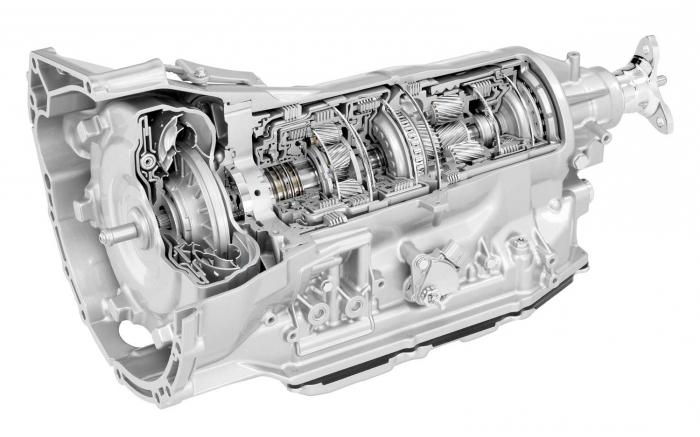
Automatic transmission and the domestic auto industry
In the domestic automotive industry, things were somewhat worse, but engineers were developing in these areas, and very successfully. The very first transmission systems of this kind were installed on state-owned "Chaikas", and then "people's" cars were equipped with automatic transmissions. In addition, these systems began to be used both in the construction of buses and in special vehicles. Naturally, few people thought then about what an automatic transmission was, how to use it more efficiently. 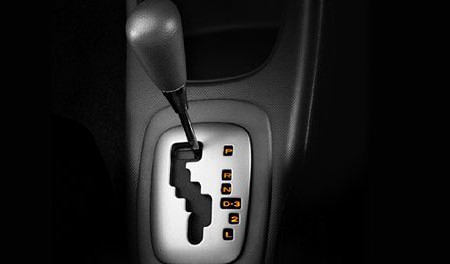
1970s to 1990s domestic auto industry no submachine guns were used. The cars were equipped with mechanical transmissions... In the 2000s, our car industry began to use these technologies, and cars began to be equipped with these systems.
The practice of using automatic transmission
In operation, these units are extremely simple. After the engine starts, just press on the brake pedal. Then you need to set the shift lever to the desired position. Then the brake can be released and gently depress the accelerator pedal. The machine will immediately move smoothly.
To brake, you just need to release the gas pedal. If greater braking performance is required, then a brake can be applied. It should be borne in mind that such transmissions usually consume more fuel than mechanics. Therefore, it is important to know what an automatic transmission is. How to use it more economically, we will consider below.
Operating modes of automatic transmissions
Any boxes of this kind have all the necessary and popular modes for driving in the city and in highways. Also, some mechanisms have some optional operating modes. Let's consider the most popular ones.
Main functionality
P - this is how the parking modes are denoted. The internal lock system starts here. Your car will be as still as possible.
R - mode for driving backwards.
N - this is how they denote the free movement mode for any direction. You shouldn't use it all the time. It is harmful.
D - in this mode, the car moves forward. A special lock is arranged here, which protects the automatic transmission from accidental activation. Switching to this mode is possible only when the brake pedal is pressed.
4-3-2-L are special operating modes for various difficult road conditions. Each one uses a certain number of gears. For example, 4 is four gears per mode and L is one gear.
About special modes
Any automatic transmission has them. How to use it, for example, in mountainous areas? So that there is no need to burn too much brake system, the driver just needs to switch the box to one of these modes. 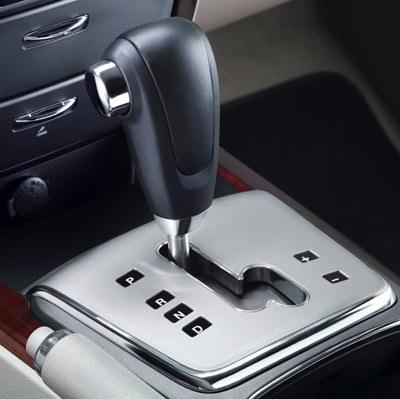 The machine will not pick up speed higher than necessary. The same can be said for driving in difficult conditions. It can be traffic jams, ice or something. For example, L can be used on steep hills and inclines. The motor picks up maximum speed, which is enough to storm even the steepest hill. In normal mode, the machines may change gears incorrectly. Often the car then stops or breaks down.
The machine will not pick up speed higher than necessary. The same can be said for driving in difficult conditions. It can be traffic jams, ice or something. For example, L can be used on steep hills and inclines. The motor picks up maximum speed, which is enough to storm even the steepest hill. In normal mode, the machines may change gears incorrectly. Often the car then stops or breaks down.
Tiptronic mode
A car enthusiast can change gears on his own. Here you can much better monitor the driving modes of the car. This is especially true in difficult conditions. This mode is available if there is a special cutout on the path of the selector. Today, any automatic transmission has this mode. How to use? Just turn it on if necessary, depending on road conditions.
Sports Modes
This is often either Sport or Kickdown. Here, the engine revs higher than when driving in D mode. It artificially engages a lower gear. In this way, a sharp acceleration can be achieved. Although it uses the full power of the motor, it is very uneconomical and should not be used every day.
Other modes
Also, for uneven terrain, you can apply low gears. This is D2 or D3.
Some boxes have overclocking modes. These are usually athletic, normal and economical. 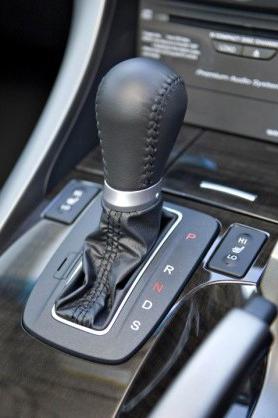 Many boxes have winter settings. They include a gentle driving mode on snow, mud or ice. You do not need to use these modes when driving on asphalt surfaces. This threatens to overheat.
Many boxes have winter settings. They include a gentle driving mode on snow, mud or ice. You do not need to use these modes when driving on asphalt surfaces. This threatens to overheat.
How to use an automatic transmission? Instructions
Let's consider the main aspects of the operation of such an automatic transmission.
If you need to use the parking mode, reverse, move forward, you must first stop the car completely.
Get under way and brake more smoothly. Try not to make squealing sounds of tires on the asphalt. Otherwise, the box won't last long. If you are lucky and you do not break the automatic transmission immediately, then sudden jerks and heavy braking can further lead to wear of the friction discs. It will feel like a jerk when shifting. Such a car will no longer provide comfort and pleasure.
Also, do not tow trailers or anything. Do not try to pull out stuck cars in a car equipped with automatic transmission or try to start the car on the move, as is customary. If you do all this, the box will soon become unusable. If you know what an automatic transmission is, how to use this device, then this will not happen to you.
Automata love regular maintenance... Such boxes are highly sensitive to lubricating fluids... If the replacement is carried out out of time, then this threatens the box failure. Oil bottles must be marked ATF.
If you need to drive on country roads and dream of powerful SUV, then you should forget about the machine. This checkpoint is ineffective in such conditions. It is believed that SUVs and automatic transmissions are completely incompatible. 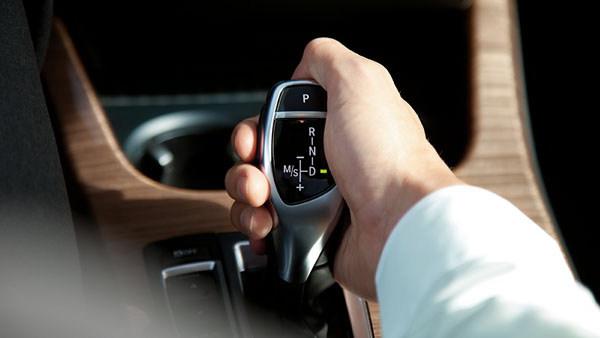 If the car is stuck somewhere in the mud, do not put pressure on the gas and skid. The machine may overheat, and this is already serious. Everything can end up with expensive repairs.
If the car is stuck somewhere in the mud, do not put pressure on the gas and skid. The machine may overheat, and this is already serious. Everything can end up with expensive repairs.
If you are driving at low speeds, you need to closely monitor the revs. Do not exceed the red zone.
In winter, when starting from a place on a cold engine, you must first warm up the machine. To do this, you can switch the mode to make the oil circulate. This transmission has a high sensitivity to lubrication. No lubrication - repair.
Parking mode is not a replacement for the parking brake. Do not forget about this.
Automatic transmission: how to use in traffic jams?
Traffic jams are part of a motorist's life. Every day, motorists spend a lot of time in them. Let's take a look at how to use an automatic transmission in these conditions.
If you are stuck in a traffic jam, then it is better to give the engine a little respite. It is much more economical and better for the drivetrain. In D mode, the power unit will try to push the braked vehicle. 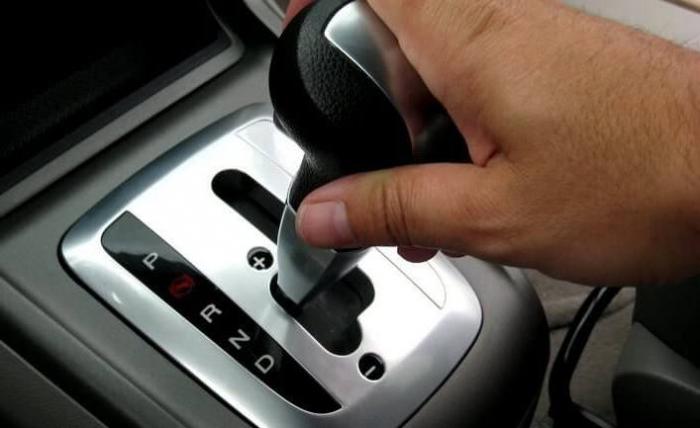 You can also turn on N, but it is better not to release the brake. Alternatively, you can use P. It will block the wheels and allow your legs to rest.
You can also turn on N, but it is better not to release the brake. Alternatively, you can use P. It will block the wheels and allow your legs to rest.
Steering column switches
Their use is possible in the "Tiptronic" mode. The rules for working with an automatic transmission are completely the same. What if you have an automatic transmission on the steering wheel, how to use it? Everything is very simple. A petal with a “+” sign works for an increase, and a petal with a “-” sign, respectively, for a decrease. Many people find this very convenient. 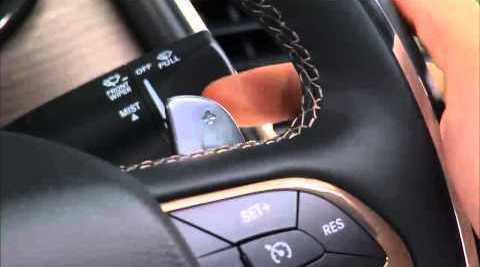 The petals are very useful for more dynamic driving and normal driving. With the help of them, you can change the intensity of acceleration and spin the motor as needed.
The petals are very useful for more dynamic driving and normal driving. With the help of them, you can change the intensity of acceleration and spin the motor as needed.
Today it is impossible to imagine a modern city car without the possibility of its complete set with an automatic one. Unfortunately, not everyone knows how to use it correctly, which leads to a significant decrease in its effectiveness. And sometimes it leads to its breakdown.
Its main quality, which most novice and professional drivers like, is the ability to automatically select gear ratio corresponding to the driving conditions. This is very convenient, since it does not require unnecessary movements of the driver if he wants to speed up or slow down the course of transport. At the same time, everyone who gets behind the wheel is obliged to know the peculiarities of its operation.
To begin with, we propose to figure out what automatic transmission modes exist.
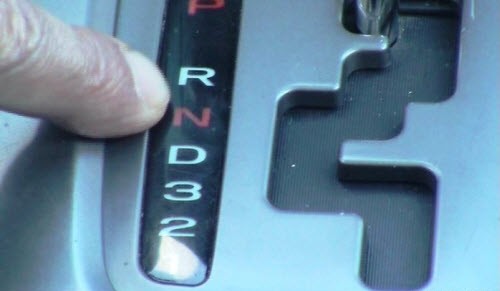
- Р () - position that allows starting the engine. The lever is only moved to the P position after the vehicle has come to a complete stop and the handbrake is applied.
- D (Drive) - the position when the selector lever activates the movement of your vehicle, automatically selecting the desired gear. In relation to other modes, the car is in motion for the longest time.
- R (reverse) is the position that activates the vehicle to move backward. Turning on is possible after a complete stop of the car while holding the brake pedal pressed.
- N (neutral position) - position idle work engine (without transmitting torque to the wheels), it is not recommended to turn it on while the vehicle is moving. It is usually used to warm up the engine in winter.
- D3 (S) - low gear position. The launch is recommended on small descents and ascents. Vehicle braking in this position is more effective than in position D.
- D2 (L) - next downshift range. An emergency option for difficult road conditions (mountain streamers, ice, etc.).
Moving the lever from position D to position D2, D3 and vice versa can be done without any problems while the car is moving. Automatic transmissions of recent years include additional acceleration modes: normal (N), sport (S) and economical (E).
To extend the service life, you should remember to follow a number of rules for operating vehicles with this type of transmission.
The oil is fine - drive safely
As you know, transmission oil ensures the operation of an automatic transmission and the entire transmission as a whole. Of course, she is very moody in her choice. different types oils, therefore, experts recommend using an original high-grade gear oil containing high-quality additives.

Usually on the bottle of oil there is an abbreviation ATF or JAC, which means "oil for automatic transmissions". Auto experts warn that the use of other fluids is highly undesirable and even harmful to the gearbox (up to the disabling of the gearbox).
The next indicator that affects the efficiency of the transmission is the oil level, which should be checked regularly. Usually, the oil level in the gearbox is fixed either with a dipstick with marking of the degree of filling, or according to the data of a special sensor, if one is included in the package of your car.
The volume of oil required for cars equipped with an automatic transmission is on average six to ten liters of transmission oil (for front-wheel drive cars) and from seven to fourteen liters (for rear-wheel drive cars). has its own unique scheme, and therefore it is necessary to find out information about the required volume of oil in service book or from an authorized dealer.
Operating conditions of the automatic box
Automatic transmissions are not suitable for (except for boxes installed on sports cars or SUVs), which should be taken as the first rule of operating a car with an automatic transmission. Harsh acceleration and deceleration can sooner or later increase the gap between the friction discs, which will cause jerking and jerking during further gear changes.
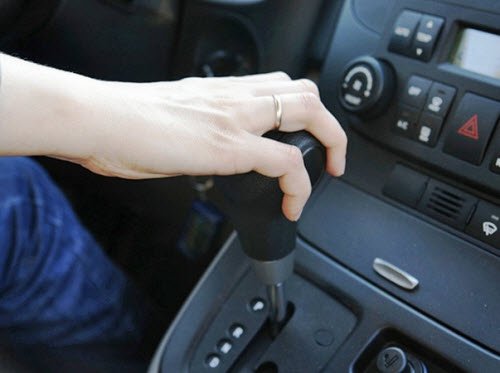
Some experts are recommended to give the automatic transmission a break - to take a short pause before each change of operating mode. In particular, when changing from "D" to "R" while parking. After engaging the gear, it is advisable to wait for the moment when the engine switches to idle speed, and then add gas.
As a separate condition, it is worth recognizing the prohibition of frequent slipping. If you are stuck on the road: the car does not move back or forward, you should not hastily and indiscriminately change the position of the automatic transmission lever. V best case the transmission will simply overheat. Well, at worst, it will fail. In an emergency like this, it may be more appropriate to push the car outside.
How to use an automatic transmission
To start the movement of the car, it is necessary, with the brake pedal depressed, to move the selector lever from position P, N or R to position D (movement) by hand, and then release the parking brake. As you gradually release the brake pedal, you will notice how the car smoothly moves forward.
If you decide to increase the driving speed, you can place your foot on the accelerator (gas) pedal, as it becomes active, the gears will increase. To slow down the car, it is enough just to weaken the force exerted on the gas pedal or to release it altogether, in this case the gears, again without additional efforts on your part, will change in descending order.
If you want to slow down quickly or come to a complete stop, you can use the brake pedal. To start the movement after a short stop or deceleration, you should again move your foot from the brake pedal to the accelerator pedal. During the described actions, the selector lever must always remain in position D. Changing this position is advisable only during long stops.
Consequently, when driving in the city, the driver only needs to set the selector to position D (driving) once, after which, with his right foot, alternately pressing the accelerator and brake pedals to control the driving speed. He can shift all the rest of his attention to steering wheel control and turn signals.
Additional modes of an automatic transmission
- Winter operating mode
Almost all car models with an automatic transmission have a button for starting an additional automatic transmission mode. Next, we will describe the winter mode, which is most often encountered on automatic transmissions... This mode is indicated by various symbols: "*", "W", "SNOW", "HOLD", "WINTER". The purpose of the winter driving mode is to prevent wheel slip at the start of the movement and at the time of gear shifting. For this purpose, the operation of 1st gear is excluded altogether. The car starts moving immediately from second gear. The inclusion of other high-speed gears is performed at lower engine speeds, as a result of which smaller differences in the operation of the gearbox during acceleration are achieved, which sharply reduces the likelihood of a dangerous skid. Experts do not recommend activating the winter mode during the warm season, in particular when driving on highways with good coverage, since the load on the automatic transmission is maximum and the box may overheat.
- Selector D Position Sub Modes
This includes automatic transmission modes in which acceleration is limited above individual gears.
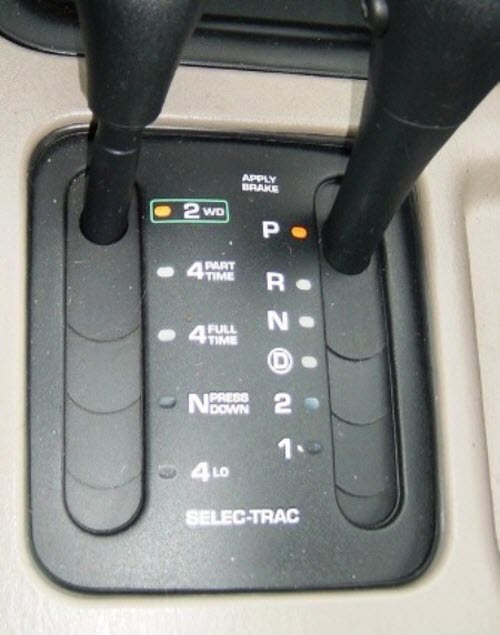
- Position "3" or "S" ensures the speed of the car is not higher than the third gear. This is appropriate on sections of the road that require increased driver attention: moderate descents, ascents, etc. According to the automatic transmission owners, the "3" mode is also good for fast overtaking while driving outside the city, since the maneuver occurs at high engine speeds when it develops maximum power, which ensures the best acceleration of the car. As a rule, this limit depends on the car model, on average it is 130-140 km / h. When driving in "3" mode, it is important to ensure that the tachometer needle does not go into the red zone.
- "2" - this automatic transmission mode limits shifting above 2nd gear. The speed limit here is approximately 70-80 km / h. This position of the automatic transmission is used on rather steep slopes, as well as on slippery surfaces.
- "1" or "L" - this mode is suitable for difficult driving conditions: off-road, muddy roads, very steep slopes, etc. In this situation, the automatic transmission will work only in the lowest gear - up to 30-40 km / h.
Attention! Accidental activation of modes "1" or "2" at high speed can cause the car to decelerate sharply, which threatens an unwanted skid.
All of the above modes of the automatic transmission allow you to effectively maneuver on the most difficult sections of the road: on ups and downs, as well as in situations requiring heavy engine braking.
What's not to like about automatic transmission?
- An unheated automatic transmission does not like unnecessary load and high speeds. Even in the warm season, for the first kilometers of the journey, try to move at a low speed, excluding sudden acceleration. Wait for the oil in the transmission and engine to reach operating temperature. Do not forget that it takes much more time to warm up the box than for the motor. In winter, before starting the movement, it is advisable to drive the oil in the box a little, in turn moving the selector lever to various operating modes with a short delay on each of them. If you wish, you can even stand with the included driving mode. The brake pedal must of course be depressed during this activity. In order to warm up the box more quickly, the first few minutes of the journey can be driven with the automatic transmission active in winter.
- Avoid off-roading. The automatic transmission is not intended for off-road use. Most modern gearboxes, and the automatic in particular, do not accept wheel slip. Therefore, sharp pressing of the gas pedal should be avoided when driving on uneven roads. If your car does get stuck, you shouldn't even try to get out in the "Drive" mode! For this purpose, there are automatic transmission positions - "L" or "1". At the same time, if possible, try to drive back on your own track without slipping. Off-road and automatic transmission is a separate story, the main thing is to remember that sometimes it is easier to work with a shovel, ask for help from towing vehicles, than to sink the gas pedal to the floor with a naive hope for a miracle.
- It is undesirable to tow heavy ones with automatic transmission. Another feature of the "automatic" device is the categorical exclusion of extremely heavy loads, at which the gearbox overheats and quickly wears out. Therefore, it is better to leave the towing of another car or a heavy trailer to a mechanical brother.
- It is undesirable to tow cars with automatic transmission. It is also not worth dragging cars with an automatic transmission in tow. The car manual reflects that the operation of an automatic involves severe restrictions, determining, for example, that towing passenger cars allowed only at speeds up to 30-50 km / h and at distances of no more than 30-50 km.
Why does a car with automatic transmission need a hand brake?
The observations of car owners with automatic transmissions indicate that they practically do not use the parking brake on their cars. For parking, they use the "Parking" mode, and for short-term stops, only the brake pedal is enough.

However, if you look into the operating instructions for a car with an automatic transmission, then with a high degree of probability you will notice the following entry: “Always use the parking brake, for a guaranteed parking of the car, it is not enough to rely on the selector switch to the“ P ”position.
We do not know what are the reasons for the manufacturer's mistrust of "Parking", especially since most automatic transmission users note the effectiveness and reliability of this mode, even for parking on steep slopes. On the contrary, they are more reminiscent of how the forgotten tightened handbrake caused the brake discs to rust. Moisture, as a rule, gets there during washing or driving through deep puddles.
So, when parking for a long time on a steep slope, it will be better and more reliable to use not the hand brake, but the materials at hand (stones, bricks, etc.), which are placed under the wheels.
Without a doubt, there are situations when the handbrake is simply irreplaceable:
- additional fixation of the car in case of stops with the engine running, especially when you leave the salon;
- reliable braking of the car, for example, when changing a wheel and in other similar situations;
- emergency stop on a steep slope before engaging in P mode. Otherwise, the selector lever will require additional efforts from you when fixing it on the "Parking". In such a situation, before starting the movement, do not forget to first remove the selector from the "Parking" and only then loosen the handbrake. Well, just before the car moves, disengage the parking brake completely.
Video - automatic transmissions
The traffic police fined the Russian who converted the Lada into a Mustang
The police were attracted by the photos of the unusual "Mustang" on social networks. After the pictures became popular, the traffic police inspectors identified the owner of the vehicle and invited him to talk to the unit, according to the UGIBDD in the Omsk region. During the audit, it was found that the 24-year-old Omsk made the following changes in the car's design: installed ...
Free parking lots next to toilets will appear in Moscow
This was told by the author of the project, a member of the Moscow City Duma Advisory Board, Vladimir Chibirev. According to him, it is proposed to extend the experience of the HLW to the entire capital, where almost all free public toilets have such parking, according to m24.ru. It is assumed that parking spaces will appear not only next to city toilets, but also next to modules of commercial ...
GM-AvtoVAZ refused to participate in the Moscow Auto Show
Konstantin Baishev, Sales and Marketing Director of the GM-AvtoVAZ JV, said in an interview with the Avtostat agency that the company would not participate in the Moscow Motor Show. It should be noted that quite a few companies have refused to participate in the Moscow Motor Show - apparently, the upcoming exhibition will be the most modest in all recent years. As for the prospects for the emergence new chevrolet...
A new Swedish brand will appear on the car market
Thus, NEVS will finally abandon the use of the Saab brand, which will cease to exist as car brand The first NEVS model will be an electric vehicle built on the Saab 9-3 platform. The start of its production is scheduled for 2017. “The automotive industry is rapidly changing and preparing to respond to the traffic and emissions challenges that ...
UAZ created 8 new special services to control quality
On the assembly lines - the main one and the body one - five quality inspection posts have been created, according to the Panorama UAZ newspaper, a corporate publication of the automaker. Three more inspections confirm the completion of the repair. In total, eight new points have appeared at the assembly plant alone, which “monitor the quality of UAZ vehicles and give timely signals ...
Reliable braking without copper - the current trend in friction materials
Sustainability is one of the key trends in the modern car industry, and this is recognized by both car owners and automakers. The former are moving to more environmentally friendly cars, the latter are striving to provide a comfortable ride without harming the environment. And this is not only about the notorious exhaust gases: so, the problem of copper is quite acute, which, ...
OSAGO will turn into a lotteryOSAGO will turn into a lottery
The Russian Union of Auto Insurers came up with new way combating the shortage of forms of compulsory motor third party liability insurance, which has been going on in some regions for more than a year. As early as June 1 of this year, agent firms are starting to work in Russia, which will sell the policies of all companies present on the market, Rossiyskaya Gazeta reports. As conceived by the authors of this initiative, the agent will not have ...
PSA: 50% more fuel consumption on the road than in tests
Since 2017, the European Union is preparing to introduce new rules for the certification of vehicles (WLTP, Worldwide harmonized Light vehicles Test Procedure). The task of the latter is to make sure that the passport data on fuel consumption and harmful emissions do not differ from the real ones. It is noted that now certification tests are carried out stationary, at load stands, and allow manufacturers ...
They want to increase the penalty for a non-allowed pedestrianWhere can you buy new car in Moscow? The number of car dealerships in Moscow will soon reach one thousand. Now in the capital you can buy almost any car, even Ferrari or Lamborghini. In the fight for the client, salons go to all sorts of tricks. But your task ...
HOW to choose your first car, choose the first car.
How to choose your first car Buying a car is a big event for the future owner. But usually the purchase is preceded by at least a couple of months of choosing a car. Now the car market is filled with many brands in which it is quite difficult for an ordinary consumer to navigate. I want to drive a car: underwater ...
What do you need to know to take a car loan? Buying a car, and especially at the expense of credit, is far from the cheapest pleasure. In addition to the principal amount of the loan, which reaches several hundred thousand rubles, the bank also has to pay interest, and considerable interest at that. The list ...
Cars for real men
What kind of car can make a man feel superior and proud. One of the most titled print editions, the financial and economic magazine Forbes, tried to answer this question. This print publication tried to determine the most male car according to the rating of their sales. According to the editorial board, ...
Which cars are most often bought in Russia in 2017-2018?
The number of cars on the roads of the Russian Federation is constantly growing - a fact that is confirmed by the annual research of sales of new and supported models. So, based on the results of the study, which can answer the question of what cars are bought in Russia, in the first two months of 2017 ...
What cars are stolen most often
Unfortunately, the number of stolen cars in Russia does not decrease over time, only the brands of stolen cars change. It is difficult to pinpoint the list of the most stolen cars, since each insurance company or statistical office has its own information. The exact data of the traffic police about what ...
Rating of the most expensive carsThroughout the history of the automotive industry, designers from the total mass of production models have always liked to single out several that are unique in terms of characteristics and capabilities. At the present time, this approach to the design of cars has been preserved. To this day, many of the world's auto giants and small companies strive to ...
The most stolen cars in Moscow in 2017
The rating of the most stolen cars in Moscow has remained almost unchanged for several years. About 35 cars are hijacked in the capital every day, 26 of them are foreign cars. The most stolen brands According to the Prime Insurance portal, the most stolen cars of 2017 in ...
I always use the parking brake (handbrake) when the car is even at a minimum slope. This definitely helps to reduce the load on the automatic transmission during the next start. The algorithm is as follows: stopped - handbrake - Parking; Wound up - Drive - took off the parking brake - released the service brake and drove off.
Andrey
thank you, now I know how to use the automatic transmission I didn’t know before and I had to contact these guys akpp24.ru, they did everything well, I hope the rest of those who read will not get into such a situation and for solid money
